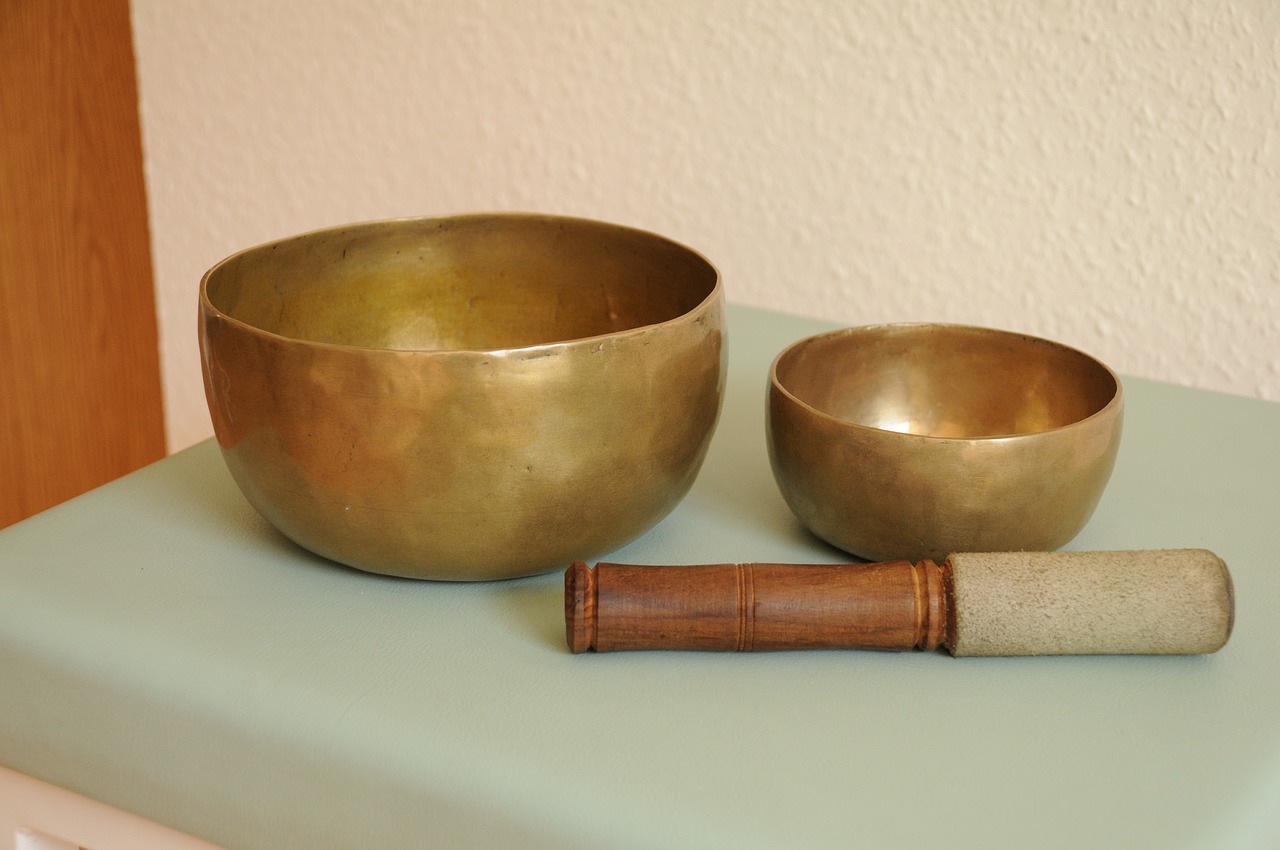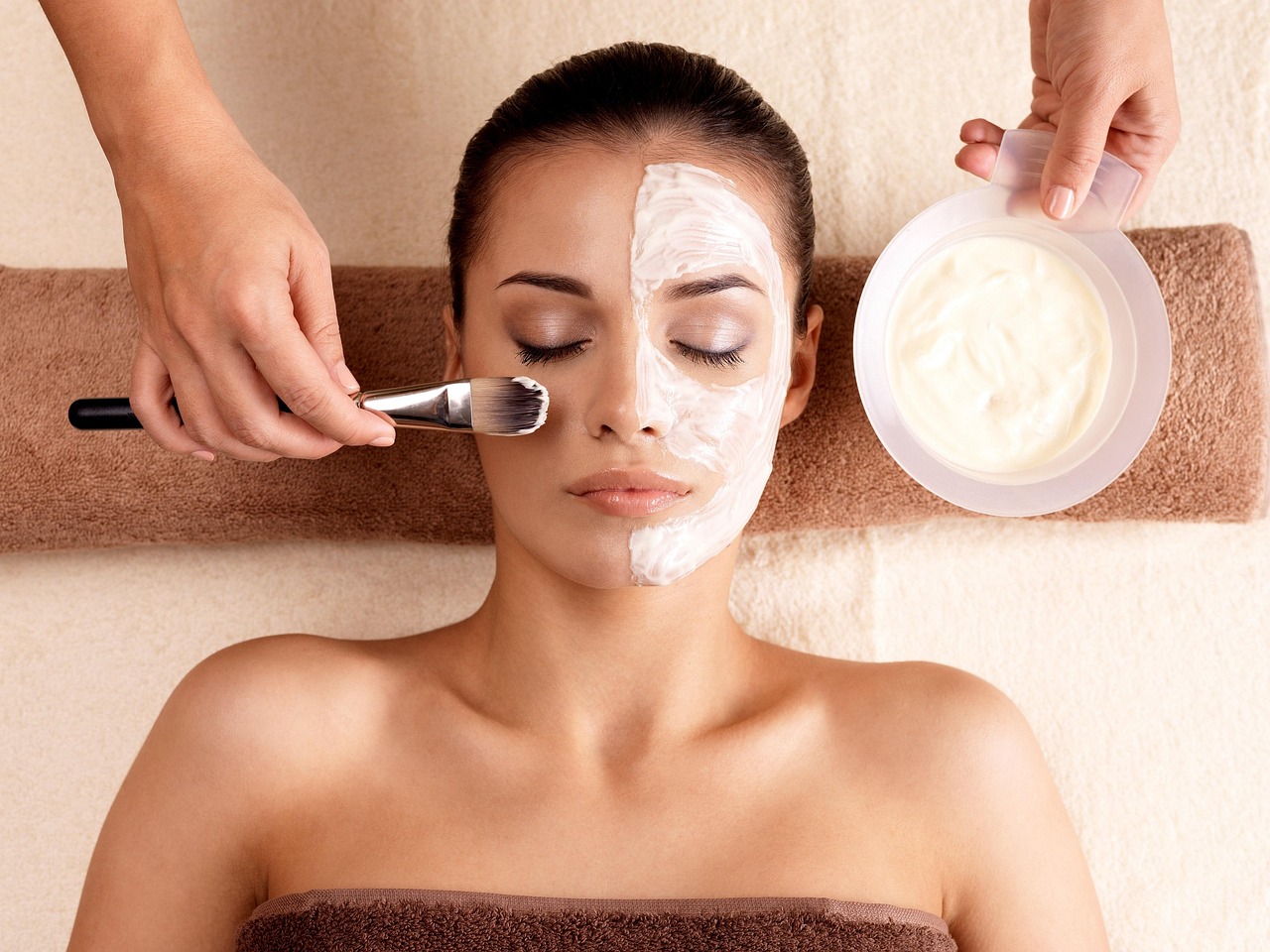This article delves into the rich traditions and techniques showcased in Asian massage videos, emphasizing their therapeutic benefits and cultural significance. By exploring various styles and providing practical insights, we aim to enhance your overall well-being.
The Cultural Significance of Asian Massage
Asian massage techniques are deeply rooted in their respective cultures, reflecting values such as harmony, balance, and holistic health. Understanding these cultural backgrounds not only enriches the experience but also connects practitioners and recipients on a deeper level.
Popular Asian Massage Techniques
- Shiatsu: A Japanese technique that uses finger pressure on specific points to relieve tension and promote energy flow.
- Thai Massage: A unique blend of acupressure and yoga-like stretching to enhance flexibility and reduce stress.
- Tui Na: A traditional Chinese practice that integrates acupressure with therapeutic movements aimed at healing.
Shiatsu: The Art of Finger Pressure
Shiatsu massage is known for its ability to alleviate stress and improve overall energy flow. Practitioners apply pressure to specific points, which can lead to a range of health benefits, including:
- Reduction in headaches
- Improvement in digestive health
- Enhanced relaxation
Techniques Used in Shiatsu
The techniques in Shiatsu involve a combination of pressing, stretching, and rhythmic movements, allowing practitioners to address various ailments effectively.
Thai Massage: A Dynamic Approach
Thai massage is characterized by its holistic approach, incorporating acupressure and dynamic stretching. This method not only promotes relaxation but also enhances flexibility and reduces muscle tension.
Tui Na: The Chinese Healing Art
Tui Na is often utilized in both wellness and medical settings to treat musculoskeletal issues. Its effectiveness in pain management is well-documented in traditional Chinese medicine.
Common Techniques in Tui Na
Practitioners employ various hand techniques, such as kneading and rolling, to achieve therapeutic effects on the body.
Integrating Asian Massage Techniques into Daily Life
Incorporating elements of Asian massage into your daily routine can significantly enhance your well-being. Simple self-massage techniques and mindfulness practices can be easily adopted.
Choosing the Right Asian Massage for You
With a multitude of styles available, selecting the right massage can be daunting. Consider personal preferences, health conditions, and specific goals when making your choice.
Finding Qualified Practitioners
To ensure a positive experience, it is essential to locate skilled practitioners specializing in Asian massage techniques. Look for licensed therapists with a strong reputation and relevant training.
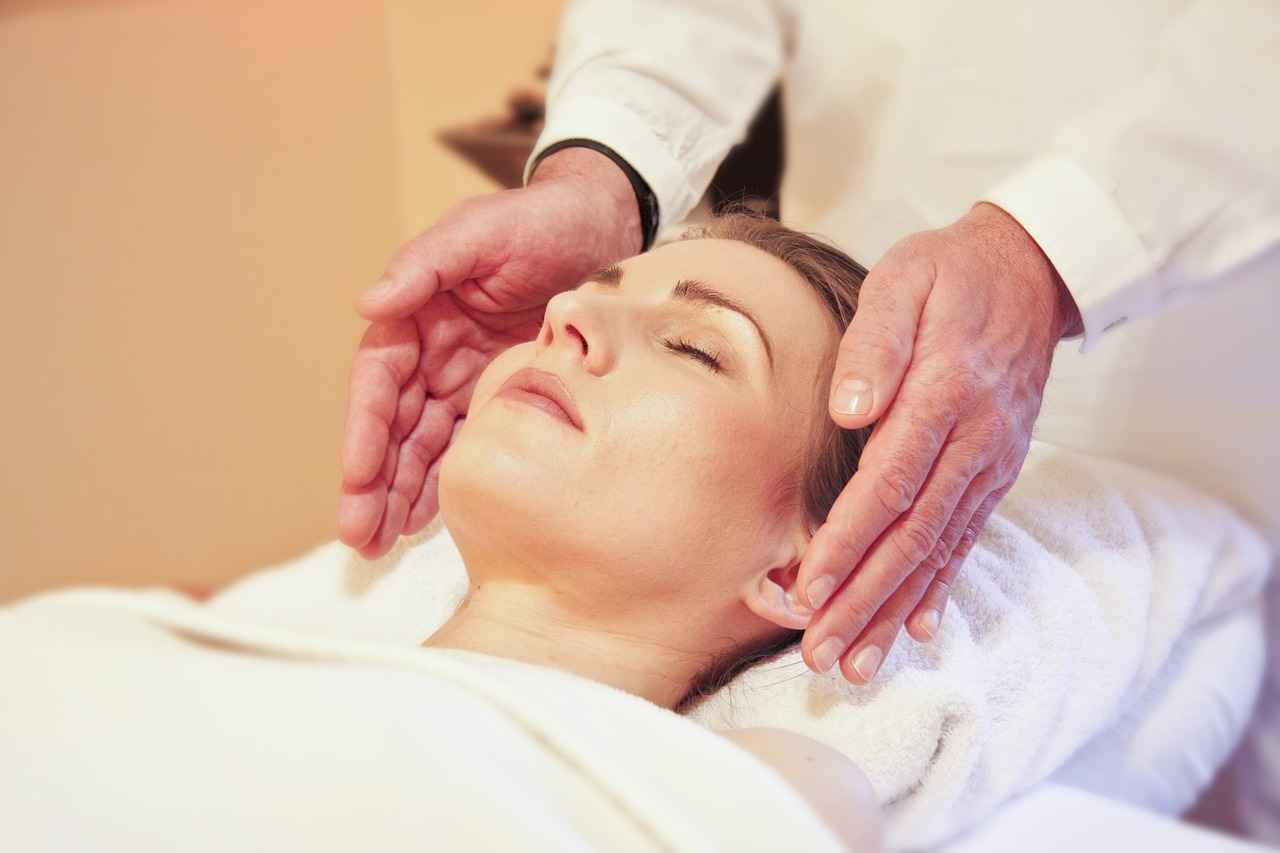
The Cultural Significance of Asian Massage
Asian massage is not merely a technique for relaxation; it is a profound reflection of the cultural values, philosophies, and traditions that have shaped societies over centuries. Understanding the cultural roots of Asian massage offers invaluable insights into its various techniques and underlying philosophies.
Each style of Asian massage, whether it be Shiatsu from Japan, Thai massage, or Tui Na from China, embodies unique cultural elements that reveal much about the people who practice them. For instance, Sanskrit texts and ancient Chinese philosophies emphasize the importance of energy flow, or Qi, which is central to many Asian healing practices. This concept is not just about physical touch; it reflects a holistic understanding of the body and spirit.
Moreover, Asian massage techniques often incorporate elements of spirituality and mindfulness. Practices such as meditation and breathing exercises are frequently integrated into massage sessions, highlighting the connection between mental and physical well-being. This integration mirrors the cultural belief in the balance between body, mind, and spirit, which is prevalent in many Asian societies.
Furthermore, the communal aspect of these practices cannot be overlooked. In many Asian cultures, massage is a social activity, often shared among family and friends. This communal approach fosters not only physical healing but also emotional bonding, reflecting the value placed on relationships and community.
In summary, the cultural significance of Asian massage extends far beyond its physical techniques. It serves as a gateway to understanding the rich traditions and values of the cultures from which it originates. By exploring these cultural roots, individuals can gain a deeper appreciation for the practices and philosophies that make Asian massage a unique and beneficial experience.
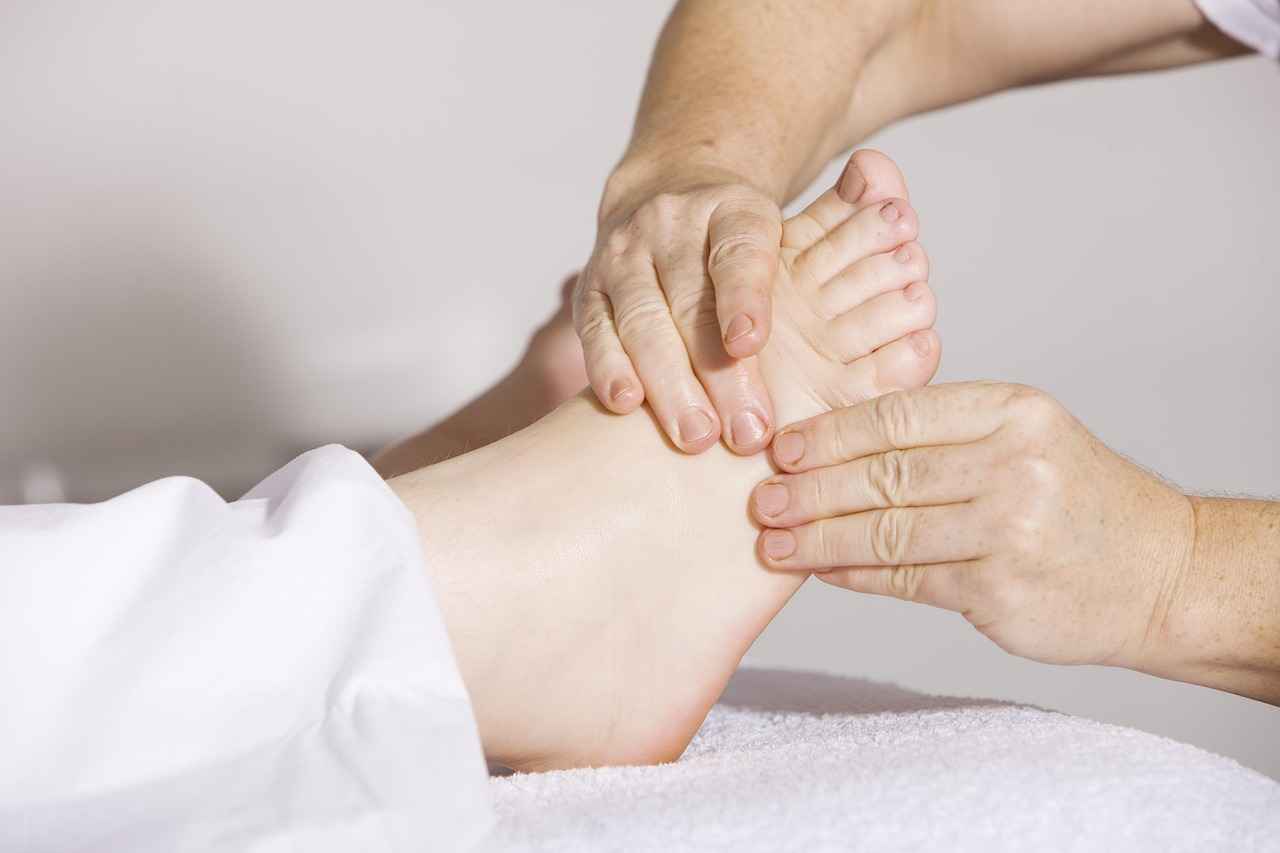
Popular Asian Massage Techniques
Asian massage is a rich tapestry of techniques, each offering unique benefits that cater to various physical and emotional needs. This section delves into some of the most renowned methods, highlighting their applications and advantages.
- Shiatsu: Originating from Japan, Shiatsu translates to “finger pressure.” This technique emphasizes the application of pressure on specific points along the body’s meridians. It is particularly effective for stress relief, enhancing energy flow, and alleviating tension. Shiatsu practitioners often use their fingers, palms, and elbows to apply rhythmic pressure, which can lead to a profound sense of relaxation.
- Thai Massage: Known for its dynamic approach, Thai massage combines elements of acupressure and yoga-like stretching. This method promotes flexibility and reduces muscle tension. The practitioner guides the recipient through a series of stretches, which can improve circulation and enhance overall vitality. Thai massage is often referred to as “lazy yoga,” as it allows individuals to experience the benefits of yoga without needing to perform the poses themselves.
- Tui Na: This traditional Chinese massage technique integrates acupressure with therapeutic movements. Tui Na is often used in both wellness and medical contexts, addressing issues such as musculoskeletal pain and stress-related disorders. Practitioners utilize various hand techniques, including kneading and rolling, to stimulate the body’s energy pathways, promoting healing and relaxation.
Each of these techniques not only provides physical benefits but also connects deeply with their cultural roots, reflecting the philosophies and values of their respective traditions. By understanding these methods, individuals can choose the most suitable approach for their personal wellness journey.
Shiatsu: The Art of Finger Pressure
Shiatsu massage is a holistic therapy rooted in traditional Japanese practices, emphasizing the use of finger pressure on specific points of the body. This ancient technique is designed to promote balance and harmony within the body, aligning with the principles of Zen philosophy. Shiatsu practitioners believe that by applying pressure to these points, they can help to unblock energy pathways, known as meridians, thereby facilitating improved health and well-being.
One of the primary benefits of Shiatsu is its ability to provide stress relief. In today’s fast-paced world, many individuals experience chronic stress, which can lead to a host of physical and mental health issues. Shiatsu massage works by inducing a state of relaxation, helping to reduce cortisol levels and promote a sense of calm. This relaxation response not only alleviates stress but also enhances overall emotional well-being.
Additionally, Shiatsu is known for its effectiveness in improving energy flow. By stimulating specific acupressure points, Shiatsu encourages the proper circulation of Qi (pronounced “chee”), the vital life energy that flows through the body. This improved energy flow can lead to increased vitality, better sleep quality, and enhanced immune function. Many clients report feeling rejuvenated and more energized after a Shiatsu session.
Moreover, Shiatsu massage can also alleviate various physical ailments, including headaches, muscle tension, and digestive issues. Research has shown that regular Shiatsu treatments can contribute to a significant reduction in pain and discomfort, making it a valuable option for those seeking natural relief.
In summary, Shiatsu is more than just a massage technique; it is a comprehensive approach to health that integrates physical, emotional, and spiritual aspects of well-being. By embracing Shiatsu, individuals can experience profound benefits that extend beyond the treatment room, fostering a greater sense of balance and harmony in their lives.
Health Benefits of Shiatsu
Shiatsu, a traditional Japanese massage technique, is well-regarded for its ability to address a variety of health issues. Among its many benefits, alleviation of headaches and digestive problems are particularly notable. Numerous studies have highlighted the effectiveness of Shiatsu in promoting overall health and well-being.
Research indicates that Shiatsu can significantly reduce the frequency and intensity of tension headaches. A study published in the Journal of Alternative and Complementary Medicine found that participants receiving regular Shiatsu treatments reported a marked decrease in headache occurrences, attributing this improvement to the technique’s ability to enhance blood circulation and relieve muscle tension.
In addition to headaches, Shiatsu has demonstrated positive effects on digestive health. A clinical trial conducted by the International Journal of Therapeutic Massage and Bodywork revealed that Shiatsu massage could help alleviate symptoms of irritable bowel syndrome (IBS). Participants experienced reduced abdominal pain and improved bowel function, suggesting that the deep pressure applied during Shiatsu may stimulate the digestive system and promote better gut health.
The principles behind Shiatsu are rooted in the concept of energy flow throughout the body. By applying pressure to specific acupressure points, practitioners aim to balance the body’s energy, known as Qi. This balance is essential for maintaining health and preventing illness. Studies show that regular Shiatsu sessions can lead to improved emotional well-being, reduced stress levels, and enhanced sleep quality, further contributing to overall health.
In summary, Shiatsu is not just a form of relaxation; it is a holistic approach to health that has been supported by various studies. Its ability to alleviate headaches and digestive issues highlights its importance in promoting comprehensive wellness. As more individuals seek alternative therapies for health management, Shiatsu stands out as a viable option backed by scientific evidence.
Techniques Used in Shiatsu
Shiatsu, a traditional Japanese massage technique, employs a variety of methods that focus on restoring balance and promoting wellness. The core techniques used in Shiatsu include pressing, stretching, and rhythmic movements, each contributing to the overall therapeutic experience.
Pressing is perhaps the most recognizable technique in Shiatsu. Practitioners apply firm pressure using their fingers, palms, or thumbs on specific points along the body’s energy pathways, known as meridians. This targeted pressure aims to release tension and improve the flow of Qi (vital energy), which is essential for maintaining health. The pressure applied can vary in intensity, allowing practitioners to customize the experience based on individual client needs.
Another fundamental technique is stretching. Shiatsu incorporates gentle stretches that help enhance flexibility and relieve muscle tightness. These stretches often resemble yoga poses, promoting not only physical relaxation but also mental clarity. By encouraging the body to move through its natural range of motion, Shiatsu practitioners facilitate the release of built-up tension and enhance overall mobility.
Rhythmic movements are also integral to Shiatsu sessions. These movements create a soothing flow, helping to calm the nervous system and promote deep relaxation. Practitioners may use a combination of rocking, swaying, and gentle rolling motions to guide the body into a state of tranquility. This rhythmic approach not only aids in stress relief but also enhances the effectiveness of other techniques used during the session.
In summary, the techniques employed in Shiatsu—pressing, stretching, and rhythmic movements—work synergistically to provide a holistic treatment experience. By understanding these methods, individuals can appreciate the depth of Shiatsu and its potential benefits for both physical and mental well-being.
Thai Massage: A Dynamic Approach
Thai massage is a unique and ancient practice that harmoniously blends elements of acupressure and yoga-like stretching. This dynamic approach not only promotes relaxation but also enhances overall well-being. By utilizing a combination of rhythmic compressions and gentle stretching, Thai massage aims to restore balance within the body, making it a holistic therapy that addresses both physical and mental health.
One of the key features of Thai massage is its emphasis on flexibility. The stretching techniques employed during a session help to elongate muscles and improve joint mobility. As practitioners guide clients through a series of postures, the body is gently manipulated to release tension and increase range of motion. This aspect of Thai massage is particularly beneficial for those who may be experiencing stiffness or discomfort due to sedentary lifestyles or physical exertion.
Moreover, the holistic approach of Thai massage extends beyond mere physical benefits. The practice encourages a deep sense of relaxation and mental clarity. By focusing on the breath and mindful movement, individuals can experience a profound state of tranquility, which is essential for reducing stress levels. This meditative quality makes Thai massage not just a physical treatment, but a pathway to emotional and spiritual well-being.
In addition to enhancing flexibility and reducing tension, Thai massage is known to promote energy flow throughout the body. The application of acupressure techniques stimulates specific points along the body’s energy lines, known as Sen lines. This stimulation helps to clear blockages and restore the natural flow of energy, which can lead to improved vitality and overall health.
Overall, Thai massage is a comprehensive therapy that offers a myriad of benefits for both body and mind. Its unique combination of stretching and acupressure not only enhances physical flexibility but also fosters a deep sense of relaxation, making it an ideal choice for anyone seeking to improve their health and well-being.
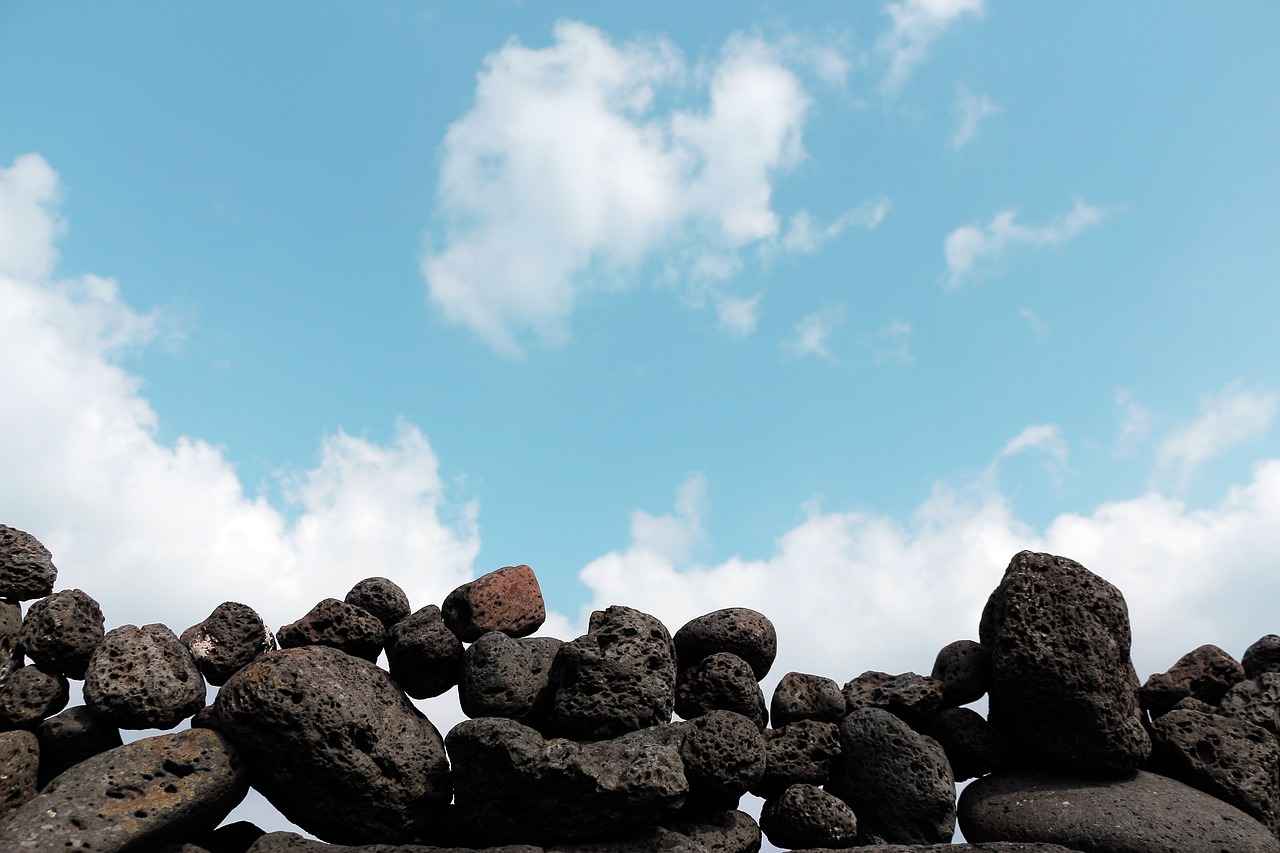
Tui Na: The Chinese Healing Art
Tui Na is a revered traditional Chinese massage technique that harmoniously blends acupressure with various therapeutic movements. This ancient practice has been utilized for centuries, not only for relaxation but also for addressing specific health conditions. In this section, we will delve into the multifaceted applications of Tui Na in both wellness and medical contexts, highlighting its significance in promoting overall health.
The essence of Tui Na lies in its holistic approach, which aims to restore balance within the body. By applying pressure to specific points along the body’s meridians, practitioners can stimulate the flow of Qi (energy), thereby enhancing vitality and well-being. This technique is particularly effective in managing chronic pain, alleviating stress, and improving circulation.
In wellness settings, Tui Na is often sought after for its relaxing effects. Clients may experience a profound sense of calm and rejuvenation following a session, making it a popular choice for those looking to unwind. Additionally, Tui Na can be tailored to suit individual needs, whether one seeks relief from tension or aims to boost overall energy levels.
From a medical perspective, Tui Na is frequently integrated into treatment plans for various musculoskeletal disorders. Conditions such as back pain, arthritis, and headaches can be effectively addressed through targeted Tui Na techniques. Research has shown that this form of massage can significantly reduce pain and improve mobility, making it a valuable adjunct to conventional medical treatments.
Furthermore, Tui Na practitioners employ a variety of hand techniques, including kneading, rolling, and friction, each designed to elicit specific therapeutic responses. These methods not only promote physical healing but also encourage emotional balance, making Tui Na a comprehensive approach to health.
In summary, Tui Na stands out as a powerful healing art that bridges the gap between wellness and medicine. Its unique combination of acupressure and therapeutic movements offers profound benefits, making it a valuable practice for those seeking both relaxation and healing.
Benefits of Tui Na for Health
Tui Na is a fundamental aspect of traditional Chinese medicine (TCM) that has been practiced for centuries. This ancient healing art is not only a form of massage but also a therapeutic approach that aims to harmonize the body’s energy, or Qi. Tui Na is particularly effective in addressing musculoskeletal issues and promoting relaxation, making it a popular choice for those seeking relief from pain and tension.
In TCM, Tui Na is believed to facilitate the flow of Qi through the body’s meridians, thus restoring balance and health. The technique employs a variety of hand movements, including kneading, rolling, and pressing, which target specific acupressure points. This practice is not merely about physical manipulation; it also incorporates the philosophical aspects of TCM, which emphasize the interconnectedness of body, mind, and spirit.
Research has shown that Tui Na can be particularly effective in managing chronic pain, such as lower back pain, neck pain, and arthritis. A study published in the Journal of Traditional Chinese Medicine found that patients receiving Tui Na reported significant reductions in pain and improvements in their overall well-being. The massage techniques used in Tui Na help to release muscle tension, improve circulation, and enhance flexibility, contributing to a holistic approach to pain management.
Moreover, Tui Na is not limited to physical ailments; it also promotes relaxation and stress relief. The rhythmic movements and focused pressure can induce a state of calm, which is essential for mental health. Many practitioners emphasize the importance of creating a tranquil environment during sessions to enhance the overall experience.
In summary, Tui Na is a versatile and effective method within traditional Chinese medicine that addresses both physical and emotional health. Its ability to alleviate pain and promote relaxation makes it a valuable tool for anyone seeking to improve their well-being.
Common Techniques in Tui Na
Tui Na, a traditional Chinese therapeutic massage, employs a variety of hand techniques that are integral to its practice. These methods are designed to stimulate the body’s energy flow, relieve tension, and promote overall health. Below, we explore some of the common techniques used in Tui Na, along with their intended effects on the body.
- Kneading: This technique involves applying pressure to specific areas using the palms and fingers. Kneading helps to release muscle tension, improve circulation, and enhance flexibility. It is particularly effective for areas that are tight or sore.
- Rolling: Practitioners use their hands to roll over the muscles, creating a gentle wave-like motion. This technique promotes relaxation and is beneficial for relieving stress and anxiety. It also aids in the release of endorphins, contributing to an overall sense of well-being.
- Pushing: In this technique, the practitioner applies firm pressure along the meridians or energy pathways of the body. Pushing is effective for stimulating energy flow and can help alleviate blockages that may cause discomfort or pain.
- Pressing: Similar to acupressure, this method involves applying direct pressure to specific acupoints. Pressing can help in treating various ailments, including headaches and digestive issues, by restoring balance and harmony within the body.
- Stretching: Tui Na incorporates gentle stretching of the limbs and joints. This technique enhances flexibility and helps to relieve stiffness, making it particularly beneficial for individuals with limited range of motion.
Each of these techniques serves a unique purpose and can be tailored to meet the specific needs of the individual. By understanding these methods, practitioners can effectively address various health concerns while promoting relaxation and rejuvenation.

Integrating Asian Massage Techniques into Daily Life
Integrating Asian massage techniques into daily life can significantly enhance overall well-being. These practices are not merely therapeutic; they also serve as a gateway to mindfulness and self-care. By adopting simple yet effective methods, individuals can experience the numerous benefits of these ancient traditions.
Self-Massage Techniques
- Foot Massage: Utilizing a tennis ball or a specialized foot roller can relieve tension. Simply roll the ball under your foot for a few minutes to stimulate pressure points.
- Neck and Shoulder Release: Use your fingers to apply pressure to the base of your skull and along the shoulder blades. This technique can alleviate stress and improve circulation.
- Hand Reflexology: Gently knead the palms and fingers, focusing on the pads of each finger. This practice promotes relaxation and can enhance focus and clarity.
Mindfulness Practices
- Breath Awareness: Incorporate deep breathing exercises into your routine. Inhale deeply through the nose and exhale through the mouth to calm the mind.
- Meditative Movement: Combine gentle stretching with mindful breathing. Practices like Tai Chi or simple yoga can help integrate body awareness and relaxation.
- Gratitude Journaling: Spend a few minutes each day writing down what you are grateful for. This practice can shift your mindset and enhance emotional well-being.
Creating a Routine
To fully benefit from these practices, consider setting aside specific times each day for self-massage and mindfulness. Even a few minutes can make a significant difference. Establishing a routine helps reinforce the habit, making self-care an integral part of your lifestyle.
Incorporating these Asian massage techniques into your daily life can lead to improved physical health and mental clarity, fostering a greater sense of balance and well-being.

Choosing the Right Asian Massage for You
Choosing the right Asian massage technique can be a daunting task, especially with the variety of styles available. Each technique offers unique benefits tailored to different needs. This section aims to guide you through the selection process, ensuring you find the best fit for your individual preferences and health requirements.
To start, consider your personal preferences. Are you seeking deep relaxation, pain relief, or increased flexibility? Different styles cater to various outcomes:
- Spa-like relaxation: Techniques such as Swedish massage or Aromatherapy are ideal for stress relief.
- Pain management: If you’re dealing with chronic pain, consider Tui Na or Shiatsu, which focus on acupressure points.
- Flexibility enhancement: Thai massage incorporates yoga-like stretches, making it perfect for those looking to improve their range of motion.
Next, take into account any health conditions you may have. Certain techniques may not be suitable for everyone. For instance:
- If you have high blood pressure, avoid deep tissue massages that might exacerbate your condition.
- Those with musculoskeletal issues may benefit more from Tui Na or Shiatsu, which are specifically designed to address such concerns.
Additionally, think about your specific goals. Are you looking for a one-time treatment or a regular wellness practice? This can influence your choice:
- For occasional relaxation, a single session of Aromatherapy might suffice.
- If you’re aiming for ongoing health benefits, consider establishing a routine with Thai or Shiatsu massage.
Finally, finding a qualified practitioner is crucial. Look for therapists who specialize in the techniques that interest you. Reading reviews, checking credentials, and asking for recommendations can help ensure a positive experience.
By considering these factors—personal preferences, health conditions, specific goals, and practitioner qualifications—you can confidently choose the right Asian massage that aligns with your needs.
Factors to Consider When Choosing a Massage
When it comes to selecting the right massage style, several key factors must be taken into account to ensure that the experience is both enjoyable and beneficial. Understanding your personal preferences, health conditions, and specific goals can significantly influence your choice.
- Personal Preferences: Each individual has unique likes and dislikes when it comes to touch and pressure. Some may prefer a gentle, soothing massage, while others might seek a more vigorous approach. It’s essential to consider what type of sensation you find most relaxing or effective.
- Health Conditions: Pre-existing health conditions can impact the type of massage that is suitable for you. For instance, individuals with chronic pain, injuries, or certain medical conditions should consult with a healthcare provider before choosing a massage style. Techniques like Tui Na may be beneficial for musculoskeletal issues, while Shiatsu can help with stress relief.
- Specific Goals: Identifying your goals for the massage session is crucial. Are you looking to alleviate tension, improve flexibility, or simply unwind? Different styles cater to various needs; for example, Thai massage focuses on stretching and mobility, while Swedish massage emphasizes relaxation.
Additionally, it’s important to consider the environment in which the massage takes place. A tranquil, comfortable setting can enhance the overall experience, allowing you to fully immerse yourself in the relaxation process. Furthermore, communication with your massage therapist about your preferences and any discomfort during the session is vital to achieving the desired results.
By carefully evaluating these factors, you can make an informed decision that aligns with your needs and enhances your overall well-being.
Finding Qualified Practitioners
Finding a qualified massage therapist who specializes in Asian techniques is crucial for a fulfilling and beneficial experience. Here are some effective strategies to help you locate a skilled practitioner:
- Research Online Directories: Utilize online platforms that specialize in wellness and therapy. Websites like AMTA or Massage Therapy offer directories where you can filter therapists by specialty, including various Asian massage techniques.
- Seek Recommendations: Ask friends, family, or healthcare providers for recommendations. Personal experiences can guide you toward reputable practitioners who have demonstrated expertise in Asian massage styles.
- Check Qualifications: Ensure that the therapist is licensed and certified. Look for additional training or certifications in specific Asian techniques such as Shiatsu, Thai, or Tui Na, which can indicate a higher level of expertise.
- Read Reviews: Online reviews can provide insight into the therapist’s skills and client satisfaction. Look for testimonials that specifically mention the type of Asian massage you are interested in.
- Schedule a Consultation: Many practitioners offer an initial consultation. This is an excellent opportunity to discuss your needs, ask about their experience with Asian techniques, and assess their approach to therapy.
- Evaluate the Environment: A professional and welcoming atmosphere is essential. During your visit, pay attention to the cleanliness and comfort of the space, as this can significantly impact your experience.
- Trust Your Instincts: Finally, your comfort level with the therapist is vital. If you feel at ease and confident in their abilities, you are more likely to have a positive experience.
By following these tips, you can find a qualified practitioner who will help you explore the rich benefits of Asian massage techniques, ultimately enhancing your well-being.
Frequently Asked Questions
- What are the main benefits of Asian massage techniques?
Asian massage techniques, like Shiatsu and Thai, offer a range of benefits including stress relief, improved flexibility, and enhanced energy flow. They can also help alleviate common ailments such as headaches and muscle tension, making them a great addition to your wellness routine.
- How do I choose the right type of Asian massage for my needs?
Choosing the right massage depends on your personal preferences, health conditions, and specific goals. For example, if you’re looking for deep relaxation, Shiatsu might be ideal. If you’re after increased flexibility, Thai massage could be the way to go. It’s always good to consult with a practitioner to find the best fit for you.
- Can I practice Asian massage techniques at home?
Absolutely! Many Asian massage techniques can be adapted for self-massage at home. Simple practices like stretching or applying pressure to specific points can be beneficial. Just remember to listen to your body and adjust the pressure as needed!
- How can I find a qualified Asian massage practitioner?
To find a skilled practitioner, look for certified massage therapists who specialize in Asian techniques. Check online reviews, ask for recommendations, and ensure they have the appropriate training. A good practitioner will be happy to discuss their methods and how they can help you.
